How Do Mold Upenders Help Canadian Factories Meet Safety and CSA Standards?
Flipping a multi-ton mold or die with an overhead crane is a high-stakes gamble. Every time your team uses chains and slings to turn a heavy, awkwardly shaped load, you are one slip-up away from a disaster. An accident could cause life-altering injuries, catastrophic damage to expensive equipment, and crippling production downtime. As a factory owner, I know these are the scenarios that keep us up at night, especially with the strict safety oversight in Canada. The problem is that this risky method has been "the way it's done" for decades, but there is a much safer, more efficient solution. A specialized machine, the mold upender, is designed specifically to eliminate this very hazard.
A mold upender, also known as a mold tipper or tilter, helps Canadian factories meet safety and CSA standards by replacing dangerous manual and crane-based flipping methods with a controlled, mechanized process. This machine securely clamps a mold onto a platform and rotates it 90 or 180 degrees. This action engineers out the primary hazards of dropped loads and crush injuries. By doing this, it directly aligns with the core principles of CSA Z432 for machinery safeguarding and provincial Occupational Health and Safety (OHS) regulations, which mandate employers to eliminate or reduce workplace risks wherever possible.
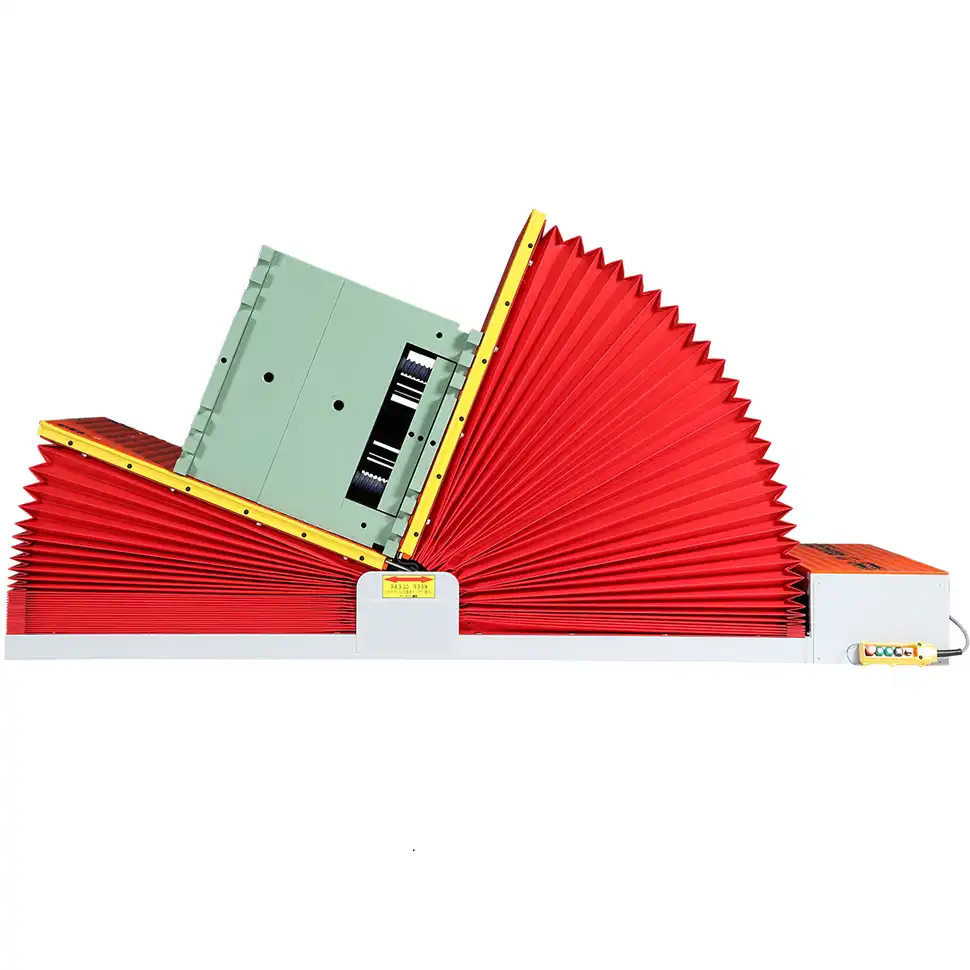
I've walked through hundreds of factories in my career, from my early days as an engineer to now running my own company, SHJLPACK. I’ve seen firsthand how a single piece of equipment can fundamentally change a plant's safety culture and efficiency. A mold upender is one of those transformative investments. It’s not just about ticking a compliance box for the Canadian Standards Association (CSA). It’s about creating a genuinely safer environment for your people and a more stable, productive operation for your business. Let’s dive deeper into how this machine achieves this and why it’s a critical piece of equipment for any modern Canadian factory handling heavy molds or dies.
What Specific Workplace Hazards Do Mold Upenders Eliminate in Canadian Facilities?
In many workshops, the standard procedure for flipping a heavy mold involves a complex dance with an overhead crane, chains, and several workers. It's a process filled with potential failure points. You worry about a chain slipping, a sudden shift in the load's center of gravity, or a moment of miscommunication between the crane operator and the ground crew. I’ve personally witnessed near-misses that could have easily resulted in tragedy. The stress this places on your team and your equipment is immense. This antiquated method introduces unnecessary risks that are simply not acceptable in today's safety-conscious environment. The solution is to take the guesswork and instability out of the equation with a machine built for one purpose: to turn heavy loads safely.
Mold upenders eliminate the most severe workplace hazards by preventing uncontrolled load drops and the resulting crush injuries. This is the single greatest risk when flipping molds with cranes. Additionally, they remove workers from the immediate danger zone, prevent ergonomic injuries like strains and sprains from pushing or pulling loads into position, and protect the mold itself from damage during the process.
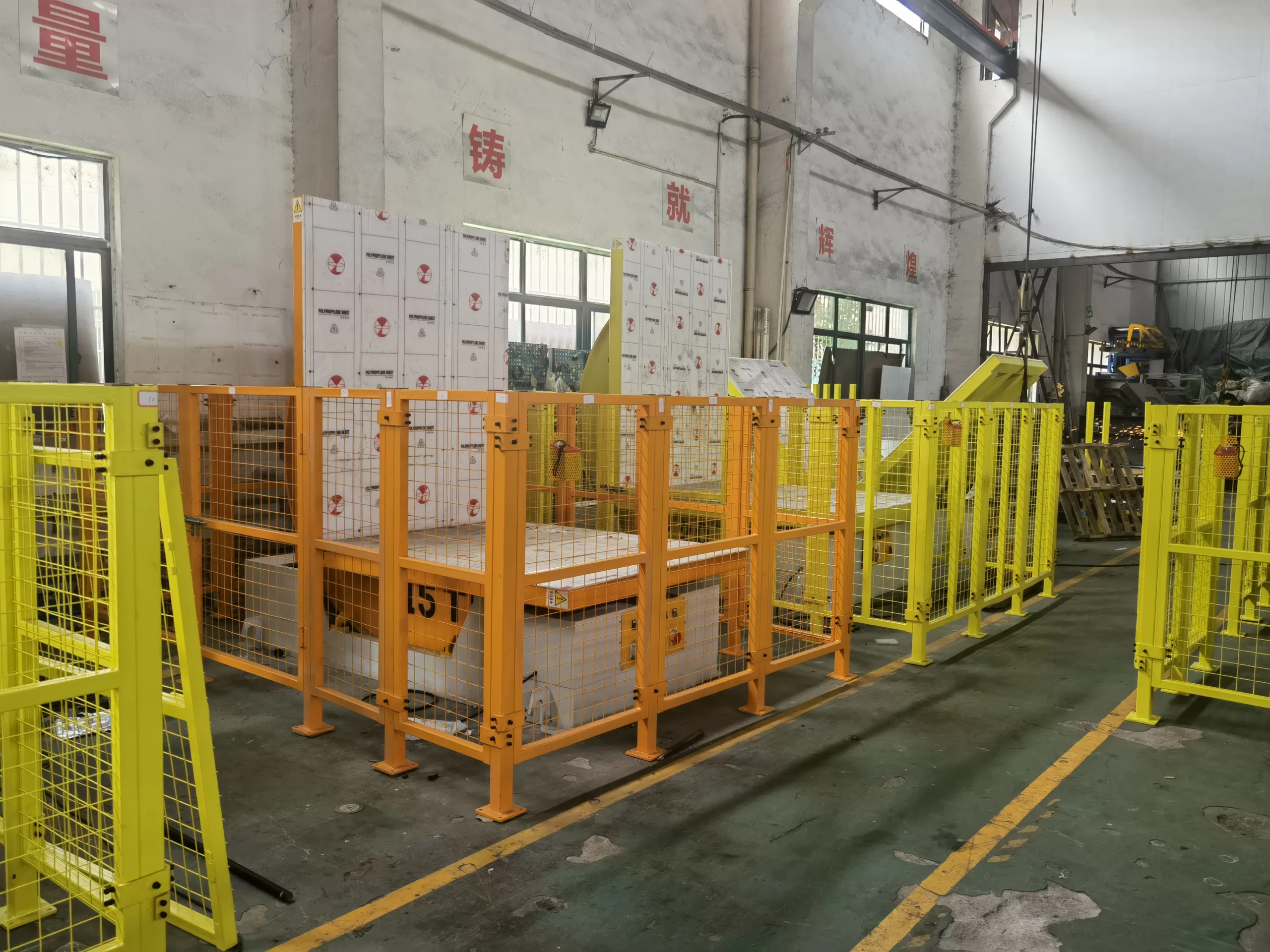
To truly appreciate the safety impact, you need to understand the mechanics of what an upender replaces. It's about moving from a high-risk, variable process to a low-risk, repeatable one. This shift is fundamental to building a robust safety program that satisfies Canadian regulatory bodies and, more importantly, protects your employees.
The Dangers of Traditional Mold Flipping
When you use a crane and slings to flip a mold, you are fighting physics. The center of gravity shifts as the mold lifts and begins to turn. The tension on the chains and slings changes constantly. If the mold is not perfectly balanced or if the rigging is not flawless, the load can swing or tumble. This creates a large, unpredictable danger zone around the operation. Workers on the floor must guide the mold, often placing their hands on it or standing nearby. This puts them directly in harm's way. I remember visiting a steel plant where the manager told me their biggest fear was "the flip." They had accepted it as a necessary evil. But in modern engineering, we should never accept such risks as necessary. These traditional methods also lead to musculoskeletal disorders (MSDs) over time, as workers strain to position and stabilize heavy equipment.
How an Upender Creates a Safe Zone
A mold upender changes the entire dynamic. The mold is loaded onto a stable, flat platform, often at ground level. It is then securely held in place by the machine's structure. The operator steps away to a control panel and activates the machine. The upender uses powerful and smooth hydraulic or electro-mechanical force to rotate the platform and the mold in a single, controlled motion. There is no swinging, no dropping, no instability. The entire process happens within the machine's defined footprint. This creates a clear and protected safe zone. Workers are no longer riggers in a danger zone; they are machine operators standing at a safe distance. This is the essence of engineering a hazard out of existence.
Comparative Risk Assessment: Crane vs. Upender
The difference in safety becomes crystal clear when you compare the two methods side-by-side. For leaders like Javier Morales, who focus on data and analysis, a direct comparison demonstrates the value proposition immediately. It’s not a marginal improvement; it's a complete change in the risk profile of the operation.
| Risk Factor | Traditional Crane Flipping | Mechanical Mold Upender |
|---|---|---|
| Crush Hazard | High. Load is suspended and unstable. A fall is catastrophic. | Extremely Low. Load is secured to a stable platform. |
| Ergonomic Strain | High. Manual pushing, pulling, and guiding of the load is required. | None. The machine does all the work. The operator pushes a button. |
| Process Control | Low. Depends heavily on operator skill, communication, and judgment. | High. The process is automated, repeatable, and precisely controlled. |
| Required Skill Level | High. Requires certified riggers and highly skilled crane operators. | Low. Requires a trained operator with basic safety awareness. |
| Damage to Mold | Moderate to High. Risk of dropping or banging the mold on the floor. | Very Low. The controlled motion protects the asset from impact damage. |
| Worker Proximity | Close. Workers must be near the suspended load to guide it. | Distant. The operator is at a control panel, away from the moving parts. |
How Do Mold Upenders Align with Key CSA Standard Principles?
Navigating the web of Canadian safety standards can feel daunting for any factory manager. You have federal guidelines, provincial regulations, and specific standards from organizations like the CSA. Trying to ensure your operations comply with every clause, especially for something like CSA Z432 on machinery safeguarding, can be a major challenge. If you miss something, you risk not only fines and stop-work orders but also the safety of your team. It's a heavy burden. The best approach is to find solutions that address the core principles of these standards head-on, providing clear and undeniable proof of your commitment to safety.
Mold upenders align with key CSA standard principles by applying the "hierarchy of controls," which is the foundation of modern safety management. The machine eliminates and substitutes the hazardous manual flipping process, which are the most effective controls. It then adds engineering controls like physical guards and safety interlocks, moving compliance far beyond a simple reliance on procedures or personal protective equipment (PPE).
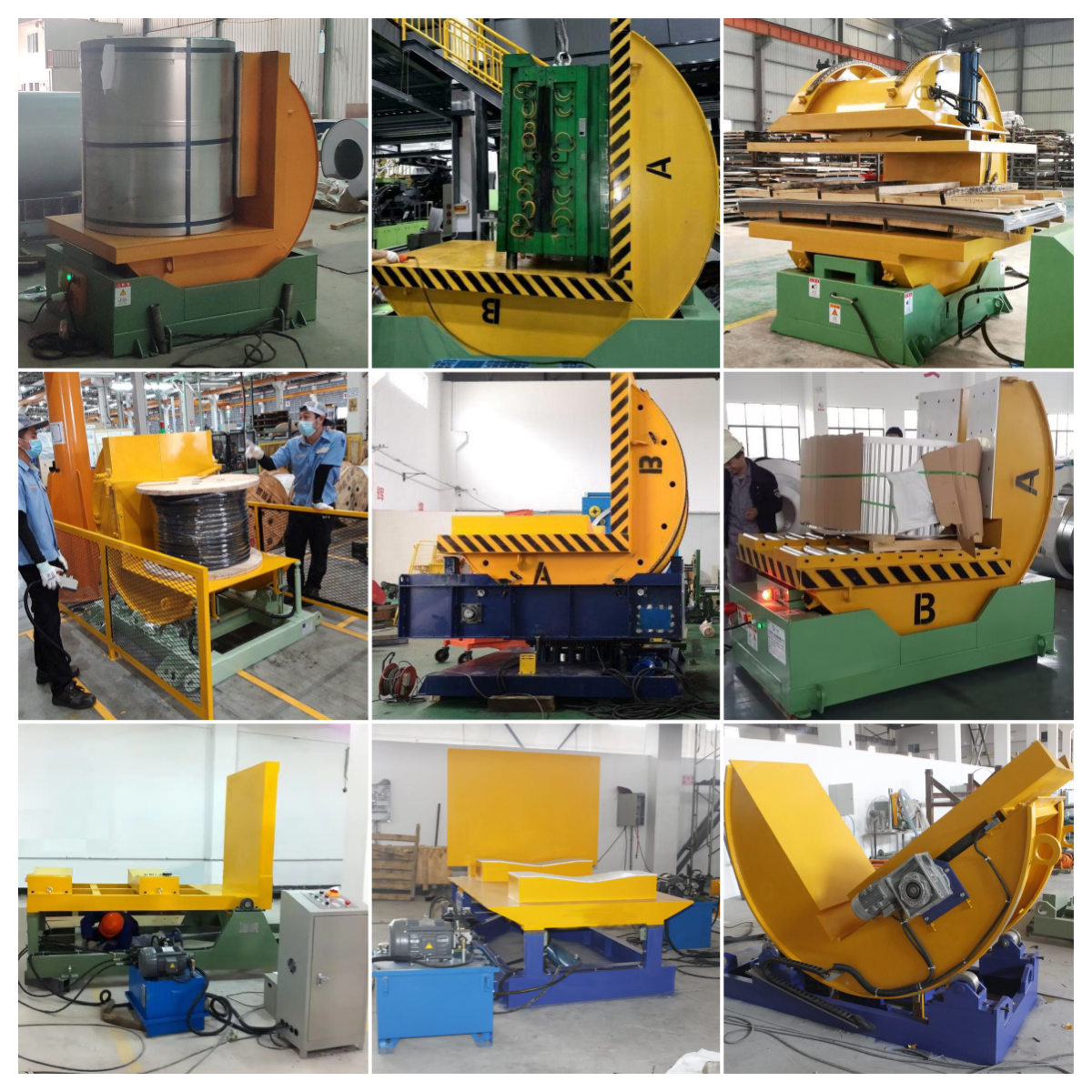
When an inspector from a body like Ontario's Ministry of Labour or WorkSafeBC walks into your facility, they want to see that you've done more than just write a safety manual. They want to see physical, engineered solutions that make accidents difficult, if not impossible. A mold upender is a powerful, visible statement that you take safeguarding seriously. Let's break down exactly how it fits into the CSA framework.
Understanding the Hierarchy of Controls in CSA Z432
The CSA, like all major global safety organizations, promotes a risk management model called the hierarchy of controls. It’s a step-by-step approach for making a workplace safer, prioritized from most effective to least effective.
- Elimination: Physically remove the hazard. This is the best option.
- Substitution: Replace the hazard with a less risky alternative.
- Engineering Controls: Isolate people from the hazard with barriers, guards, or machine modifications.
- Administrative Controls: Change the way people work (e.g., procedures, training, warning signs).
- Personal Protective Equipment (PPE): Protect the worker with equipment like hard hats, gloves, and safety glasses. This is the last line of defense.
A key mistake I see many factories make is starting at the bottom of the list. They rely too heavily on training and PPE to manage a fundamentally dangerous task. The CSA framework pushes us to start at the top.
Applying the Hierarchy to Mold Handling
Using a crane to flip a mold relies almost entirely on administrative controls (training, procedures) and PPE. The fundamental hazard of a heavy, suspended load still exists. A mold upender attacks the problem from the top of the hierarchy.
- Elimination & Substitution: The upender eliminates the risk of a free-swinging, unstable load. It substitutes a dangerous, manual process with a safe, automated one. By implementing an upender, you have already used the two most powerful safety controls.
- Engineering Controls: This is where the machine's design shines. Upenders are built with integrated safety features. These can include perimeter fencing with interlocking gates (the machine won't run if the gate is open), light curtains that stop the machine if a person enters the area, and robust mechanical stops. These are physical controls that don't rely on human behavior.
Specific CSA Clauses and the Upender's Role
While I'm not a CSA certification officer, my experience as an engineer has taught me to design machines that meet these principles. An upender directly addresses the intent behind many clauses in standards like CSA Z432.
| Upender Feature | Potential CSA Principle Addressed | How It Helps Compliance |
|---|---|---|
| Full Machine Guarding | Safeguarding by location or distance; fixed and interlocking guards. | Prevents any part of a worker's body from reaching the danger zone during operation. This is a primary requirement for automated machinery. |
| Emergency Stop (E-Stop) | Requirements for emergency stop devices. | Provides a foolproof way to halt all machine motion in case of an unforeseen event, as mandated for nearly all industrial machinery. |
| Controlled, Slow Rotation | Preventing hazards from moving parts. | The predictable, non-ballistic motion is inherently safer than a swinging crane load. The machine's movement is contained and expected. |
| Load-Sensing Interlocks | Preventing unexpected start-up. | A well-designed upender can have sensors to ensure the mold is properly seated before a cycle can begin, preventing activation with an unstable load. |
| Remote Operation Pendant | Keeping the operator in a safe position. | The operator can stand far away from the machine, with a clear line of sight, fulfilling the principle of safeguarding by location. |
What is the ROI of a Mold Upender Beyond Direct Safety Compliance?
As a business owner, I know that every investment must be justified on the balance sheet. Safety is paramount, but for a leader like Javier, who is responsible for a 2-million-ton steel mill, the question is always, "What is the return on investment?" It can be tempting to view a safety-focused machine as a pure cost center. You buy it to avoid fines or accidents, and that's the end of the story. This is a limited view. I’ve seen clients hesitate at the initial capital cost, only to realize later that the true cost was in the productivity they were losing every single day. An upender is not just an insurance policy; it's a powerful tool for improving operational efficiency.
The ROI of a mold upender extends far beyond safety by delivering significant gains in productivity and asset protection. It dramatically reduces mold changeover time, which directly increases machine uptime and production capacity. It also prevents costly damage to molds and frees up your valuable overhead crane for its primary job: moving materials for production.
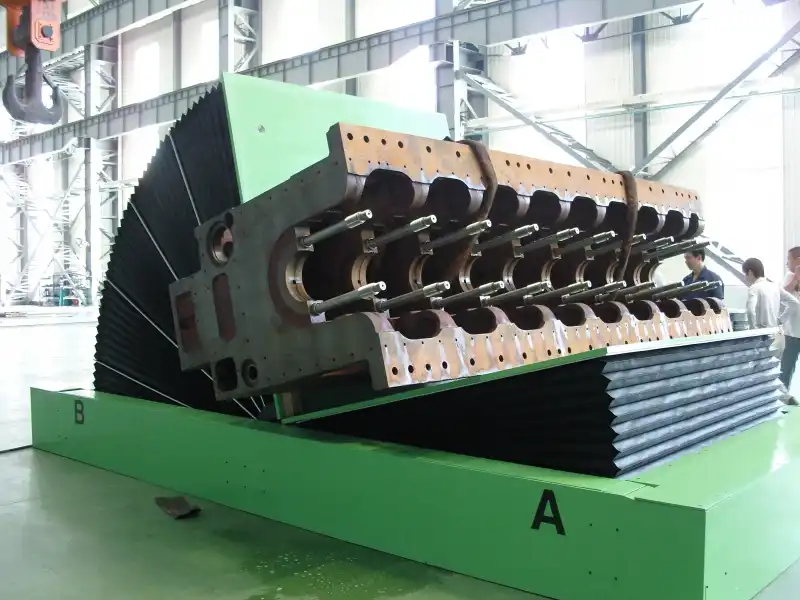
When you look at the total operational picture, the financial case for a mold upender becomes incredibly compelling. It solves challenges related to aging equipment, production bottlenecks, and high operating costs. It's a strategic investment in efficiency.
Quantifying the Time Savings
Let's do some simple math. Flipping a large mold with a crane is a slow, careful process. It can easily take 20-30 minutes and requires at least two people: a skilled crane operator and a rigger. A mold upender can perform the same task in under 5 minutes with a single operator.
Imagine your plant performs just two mold changes per day.
- Crane Method: 2 changes x 30 minutes/change = 60 minutes of downtime.
- Upender Method: 2 changes x 5 minutes/change = 10 minutes of downtime.
That's a savings of 50 minutes per day. Over a year (250 working days), that's 12,500 minutes, or over 208 hours of recovered production time. For a high-capacity facility, that extra uptime translates directly into more product shipped and higher revenue. This directly addresses the goal of improving capacity utilization.
Protecting Your Most Valuable Assets: The Molds
Molds and dies are not cheap. They are precision-engineered tools that can cost tens or even hundreds of thousands of dollars. Every time you flip one with a crane, you risk dropping it or banging it against the concrete floor. Even a small impact can cause damage that requires expensive and time-consuming repairs. In a worst-case scenario, the mold is damaged beyond repair. A mold upender handles these assets with care. The smooth, controlled rotation and soft landing surfaces of the machine ensure that your molds are protected. This extends their operational life and reduces your maintenance and replacement budget. This is a direct reduction in operating costs.
The Ripple Effect on Production
The benefits don't stop at the mold change itself. The biggest hidden cost of using a crane for mold flipping is that your crane is tied up. In a busy steel mill or manufacturing plant, the overhead crane is the lifeblood of the operation. It's needed to load raw materials, move work-in-progress, and load finished goods. When it's busy doing the delicate work of flipping a mold, all those other critical tasks have to wait. This creates a bottleneck that ripples throughout the entire factory.
| Impact Area | Before Upender (Using Crane) | After Upender (Dedicated Machine) |
|---|---|---|
| Mold Changeover Time | 20-30 minutes | < 5 minutes |
| Crane Availability | Low. Tied up during changeovers. | High. Crane is free for production tasks. |
| Labor Required | High. Needs skilled crane operator and rigger. | Low. A single trained machine operator. |
| Production Flow | Interrupted. A key asset (crane) is unavailable. | Smooth. Mold changes are an independent, offline task. |
| Risk of Production Halt | High. An accident stops the entire line. | Low. The process is isolated and safe. |
By dedicating a specialized machine to this one task, you liberate your crane and your people to focus on value-adding activities. This is how you move from a reactive, bottleneck-driven operation to a smooth, efficient, and profitable one.
How Do You Select the Right Mold Upender for Your Canadian Operations?
So, you're convinced. A mold upender is the right strategic move for your factory's safety and efficiency. But now you face the next challenge: choosing the right one. The market has many options, with different sizes, power systems, and features. Making the wrong choice can be a frustrating and costly mistake. An undersized machine won't be able to handle your largest molds, while an oversized one is a waste of capital and floor space. Choosing a machine that doesn't integrate well with your workflow can create a new bottleneck instead of solving one. As someone who has designed and built these machines, I can tell you that a successful purchase starts with a clear understanding of your own requirements.
To select the right mold upender for your Canadian operations, you must first precisely define your load requirements, including the maximum weight and physical dimensions (length, width, height) of your molds. Then, you need to decide on the core specifications: the rotation angle (90° or 180°), the power system (hydraulic or electric), and how it will fit into your factory floor plan. Finally, you must ensure it includes safety features that align with CSA standards.
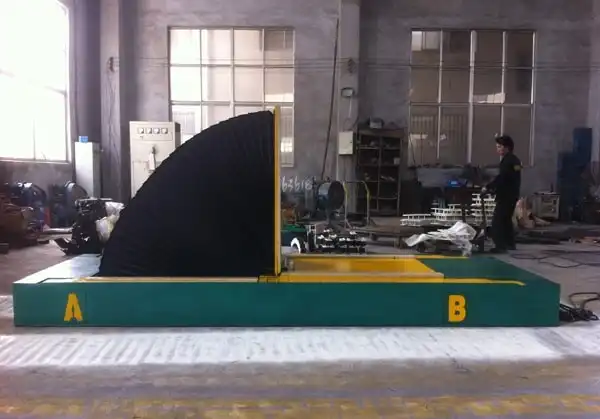
This is where a supplier should act as a partner, not just a vendor. They should walk you through these questions to ensure you get a solution tailored to your needs. This is the philosophy we live by at SHJLPACK. Let's look at the key decision points.
Key Specification Questions to Ask
Before you even look at a brochure, you need to answer some fundamental questions about your own operation.
- What is the absolute maximum weight of the heaviest mold or die you will ever need to flip? Always add a safety margin of at least 20% to this number.
- What are the maximum dimensions (Length x Width x Height) of your largest workpiece? This determines the size of the upender's platform or "V" saddle.
- What is the required rotation angle? A 90° rotation is most common for maintenance and inspection. A 180° rotation is needed to fully invert a workpiece.
- How will you load and unload the machine? Will you use an overhead crane, a forklift, or will it be part of an automated conveyor line? This impacts the machine's design and placement.
- What is your available power source? Do you have the required electrical supply (e.g., 600V, 3-phase, common in Canada) or a hydraulic power unit?
Hydraulic vs. Electro-Mechanical: A Critical Choice
One of the main technical decisions is the drive system. Both have their place, and the right choice depends on your specific environment and priorities. This is a classic engineering trade-off that a practical leader like Javier would analyze carefully.
| Feature | Hydraulic System | Electro-Mechanical System |
|---|---|---|
| Power & Capacity | Excellent. Ideal for extremely heavy loads (50+ tons). Provides immense, smooth force. | Good to Very Good. Excellent for low to medium-heavy loads (up to ~50 tons). |
| Maintenance | More complex. Requires management of hydraulic fluid, hoses, and seals. Potential for leaks. | Simpler. Maintenance involves lubricating gears, chains, and bearings. Cleaner operation. |
| Control & Precision | Good. Offers smooth control but can be harder to achieve precise, repeatable positioning without advanced controls. | Excellent. Easy to control with variable frequency drives (VFDs) for precise speed, acceleration, and positioning. |
| Footprint | Can be larger due to the need for a separate hydraulic power unit (HPU). | Often more compact as the drive system is integrated into the machine frame. |
| Environment | Not ideal for cleanroom or food-grade environments due to the risk of oil leaks. | Ideal for clean environments. No risk of fluid contamination. |
For most general manufacturing and tool & die shops, a modern electro-mechanical upender is a robust, clean, and low-maintenance choice. For heavy-duty steel mill applications with massive loads, the raw power of hydraulics is often necessary.
Integrating the Upender into Your Workflow
Finally, think about how the machine will exist in your factory. It's not just a standalone piece of equipment; it's part of a larger system.
- Floor Mounting: The simplest installation. The upender is bolted directly to the concrete floor.
- Pit Mounting: The upender is installed in a recess in the floor. This allows the loading platform to be flush with the ground, making it easy to load with a pallet jack or forklift.
- Automated Integration: In advanced factories, the upender can be integrated with powered conveyors or Automatic Guided Vehicles (AGVs). This is a key step in a digital transformation journey, creating a fully hands-off handling process.
Choosing the right upender requires a thorough analysis of your needs. When we at SHJLPACK work with a client, we don't just sell a machine. We provide a total solution, helping them analyze their workflow and select the perfect equipment to meet their goals for safety, productivity, and future growth.
Conclusion
A mold upender is a crucial investment in safety and efficiency. It protects your team and boosts productivity, securing your factory's future in the competitive Canadian market.





